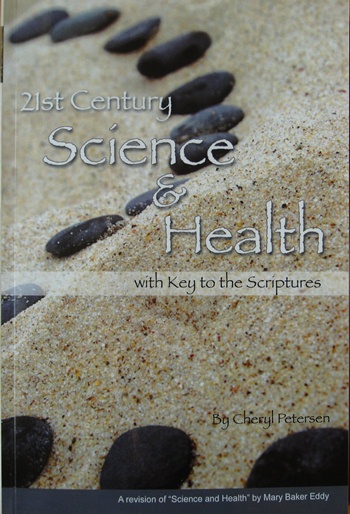Every Sunday morning when I was a child, my parents would take my brothers and sisters and me to Sunday School. This ritual continued through my teen years and includes memories of learning Bible stories and hanging out with people who didn’t complain a lot, surely the ripple effect of us studying the religious denomination of Christian Science, which seemed to practice the philosophy of positive thinking, however I’d learned enough in the Christian Science Sunday School to know Christian Science is not rooted in positive thinking, but in the abstract soil of spiritual understanding which evidently can produce moral courage, wellbeing, and happy purpose through metaphysical means.
At the age of 12 years old, I became a member of First Church of Christ, Scientist, in Boston, Massachusetts, and 5 years later I had the opportunity to visit Boston and attend a church service in the regal First Church of Christ, Scientist, constructed in 1906. After the service, I walked around outside on what has been dubbed The Christian Science Plaza which includes a colonnade, a reflecting pool, and a fountain. I also toured the Christian Science Publishing Society with its famous Mapparium, a 30 foot tall stained glass globe of the world map built in 1935. It was magical, walking inside the lighted concave Mapparium and viewing the world map from the inside out, however tourism aside, it was a bit disconcerting to notice the political boundaries were frozen circa 1935, representing pre-World War II views. But, vacation time was up and I returned home.
After graduating High School in Washington State, I entered Colorado State University in the year 1979. The 1200 mile distance between me and my home circle did not break my embedded habits. I found another branch church of First Church of Christ, Scientist, and attended church, with a dwindling congregation, on a fairly regular basis. A question posed itself in my mind, How can a religion that had once been a national leader in Christian Science in the early 20th century reinvent itself as a community of spiritual power in the 21st century?
Contrary to popular opinion, the term Christian Science was not originally assigned to a religion or church, but to a system of metaphysical healing based on spiritual law. In the 19th century, Mary Baker Eddy (1821-1910) defined Christian Science as “the law of good, interpreting and demonstrating the divine Principle and rule of universal harmony.” (Rudimental Divine Science) Eddy discovered this new/old spiritual law, and taking a scientific approach, she learned how to tap into its power to benefit humanity. It could be said that Eddy engaged the power of Mind and spirituality through divine Science and because of her embedded proclivities to God and Christianity, the spiritual law was later juxtaposed with religion and church.
In 1867, Eddy began teaching other people her method of Christian healing. She taught for almost a decade before publishing her book, Science and Health with Key to the Scriptures in 1875 to reach more people with her explanation of the power of Mind. Eventually in 1879, Eddy established First Church of Christ, Scientist, to promulgate Christian Science, and for the rest of her life she battled to keep the institution grounded on Christian Science, not an unrealistic human ideology.
Christian Science, in the form of religion, had a heyday during the end of Eddy’s lifetime. Even after her death, magnificent branch church edifices—filled with members of all ages and attendants from all backgrounds—dotted the land, nay more, the world. But, typical to religion, time and change crept up and began suffocating the cultural or social force that bound the Christian Science community together. Uncannily, Christ Jesus’ statement seemed to be confirmed, that “a man’s enemies will be the members of his own household.” (Matt. 10:36, NIV). A reliance on unwritten church rules, instead of a reliance on God and independent thought and action, set the church on a dais to be maligned, especially when it came to member’s decisions concerning medical care.

I was sensitive to the bad press mainly because I happen to be bearing and raising children during the 1980’s when a rash of charges around the nation was brought against Christian Scientists whose children died under prayer treatment. The fact that children die every day under medical treatment did not condone Christian Science and certainly did not eliminate the fear factor. Consequently, I returned to the principles of Christian Science and learned in Eddy’s Science and Health, that God can guide “into the right use of temporary and eternal means,” of healing.
I did feel God guide me, and our family experienced noteworthy spiritual healing. However, it was a decade before the upheaval in the religious organization settled down somewhat. On August 12, 1993, the Los Angeles Times printed an article titled, Court Overturns Conviction of Christian Science Couple, reading, “Between 1980 and 1990, seven Christian Science parents in the United States were prosecuted on charges ranging from murder and manslaughter to neglect. Four of those were convicted, with two convictions eventually being overturned. One set of parents pleaded guilty to a lesser charge, and two cases were dismissed.”
However, the calm was besieged by more drama when millions of church dollars were spent to launch a multimedia broadcasting system. Regrettably, the executive decision from church headquarters instead launched the church membership into a divisive fury. The New York Times, Peter Steinfels, stated in his article, Plan to Expand Church Media Reveals Christian Science Rift, dated January 4, 1989, “Christian Science, a faith that has come to epitomize a quiet, disciplined spirituality, is being rent by discord provoked by the denominations’ rapid expansion into radio and television broadcasting.” My own involvement in the Church confirmed the damning conclusion, yet history has taught me that schism and religion repeatedly go hand in hand therefore I gave divine Science the benefit of the doubt and continued to look for signs of renewal.

Then, I was caught in a terrible accident in 1998 and taken to the local hospital’s emergency room. To make a long story short, I did not need the predicted surgeries or even pain relievers, and I was healed of 2nd degree burns on half of my face through Christian Science treatment, all within 3 weeks. But, more importantly my mind broke through the boundaries of religion bias and I noticed a vivid array of spiritual seekers and leaders from different denominations, or from no religious affiliation, who were welcoming people to discover spiritual principles that interpret wellbeing and happiness to the universe.
I also read books written by doctors and researchers who expounded on the benefits of spirituality. I realized, the hard and soft sciences are actually leading people to spiritual insights. Bruce Lipton, Ph.D., author of The Biology of Belief: Unleashing the Power of Consciousness, Matter, and Miracles, wrote, “Genes are not destiny!” Lipton now believes that, “the physical body can be affected by the immaterial mind,” a mind of love.
In the year 2002, I traveled to Boston to attend a pre-opening of The Mary Baker Eddy Library and savored the sight of a renovated portion of The Christian Science Publishing Society that now houses a lending library and gallery. The multimedia venture had since gone defunct and interest in the church had changed. Although the Church more resembled a museum than a religion, I accepted the historical perspective.
History can offer a storehouse of information to understand the future of religion. Karen Armstrong, author of A History of God: The 4000 Year Quest of Judaism, Christianity, and Islam wrote, “Human beings cannot endure emptiness and desolation; they will fill the vacuum by creating a new focus of meaning. The idols of fundamentalism are not good substitutes for God, if we are to create a vibrant new faith for the twenty-first century, we should, perhaps, ponder the history of God for some lessons and warnings.” The history of God and religion reveals how doctrines and dogma give way to new grassroots movements based in community, social justice, and spiritual experience.
Religion is not a statistic to control or dominate the spirit of Christian Science. Religion is full of flux as it is but a complex, human mechanism of uncertain pasts and futures, while Christian Science is a steady life force manifesting universal Love. While revisiting Christian Science, signs of renewal in religion, spirituality, and science are found—all of which bring me full circle to a feeling of coming home.
